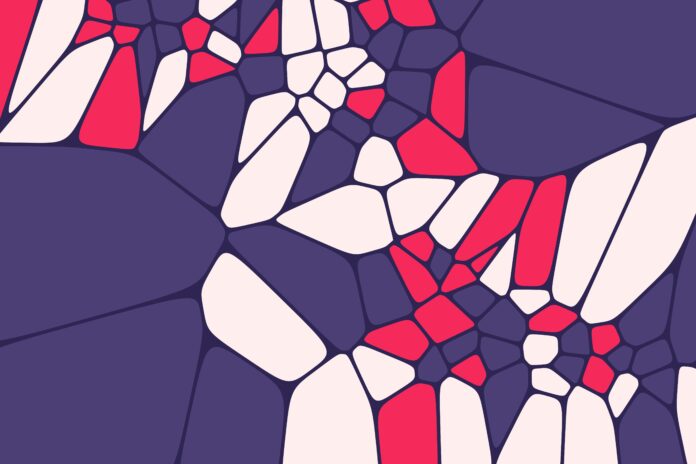Flutter is a powerful and popular open-source UI software development kit (SDK) developed by Google. It enables developers to create beautiful, fast, and cross-platform applications using a single codebase. Flutter has gained immense popularity since its release in 2017, and its versatility and ease of use have made it a go-to choice for many developers worldwide. With its unique features and capabilities, Flutter has revolutionized the way mobile and web applications are built.
Flutter utilizes a reactive framework, allowing developers to build stunning user interfaces that are both visually appealing and highly performant. It employs a layered architecture pattern, which consists of a wide range of customizable and reusable widgets. These widgets serve as the building blocks of a Flutter application, allowing developers to compose complex UIs with ease. Whether it’s a simple button or a complex layout, Flutter provides a vast collection of pre-designed widgets to cater to diverse application requirements.
One of the significant advantages of Flutter is its ability to create cross-platform applications with a single codebase. Traditionally, developing apps for different platforms such as iOS and Android required separate codebases and teams. However, Flutter enables developers to write code once and deploy it on multiple platforms, significantly reducing development time and effort. This “write once, run anywhere” approach of Flutter is made possible through its rendering engine, which uses Skia, a powerful 2D graphics library, to create visually rich and responsive applications.
Additionally, Flutter boasts a hot reload feature that allows developers to see the changes they make in real-time, without the need for recompilation or restarting the application. This feature greatly speeds up the development process and provides a seamless iterative development experience. Developers can experiment, fine-tune, and fix issues quickly, leading to faster development cycles and increased productivity.
Furthermore, Flutter provides a rich set of tools and libraries that enhance the development experience. Dart, the programming language used by Flutter, is easy to learn and offers features like just-in-time (JIT) compilation and ahead-of-time (AOT) compilation. Dart’s hot-reload feature, combined with Flutter’s hot reload, enables rapid prototyping and iteration. The Flutter framework also includes comprehensive testing and debugging tools, making it easier for developers to identify and resolve issues during the development phase.
In terms of performance, Flutter’s architecture allows for native-like performance on both iOS and Android platforms. The UI rendering is powered by Skia, which provides smooth animations and transitions. Flutter applications can leverage the GPU (Graphics Processing Unit) for accelerated rendering, resulting in fast and fluid user experiences. Additionally, Flutter’s reactive framework enables efficient handling of user interactions and updates, minimizing unnecessary redraws and improving overall performance.
Flutter’s versatility extends beyond mobile platforms. With the release of Flutter 2.0, Google introduced Flutter for the web, allowing developers to build high-quality web applications using the same codebase. This expansion into web development further solidifies Flutter’s position as a powerful cross-platform framework. Developers can now create applications that seamlessly run on mobile devices, desktops, and the web, unlocking new possibilities and reaching a broader audience.
Moreover, Flutter has a thriving ecosystem with an active community of developers, designers, and enthusiasts. The Flutter community contributes to the growth of the framework by creating and maintaining packages that extend its functionalities. These packages cover a wide range of areas, including networking, state management, UI enhancements, and more. The Flutter community also actively shares knowledge, provides support, and organizes events and conferences, fostering a collaborative environment for developers to learn and grow.
Flutter has revolutionized mobile and web application development with its cross-platform capabilities, rich set of features, and excellent performance. Its reactive framework and extensive widget library empower developers to create visually stunning and highly performant applications. With the ability to write code once and deploy it on multiple platforms, Flutter significantly reduces development time and effort. The hot reload feature allows developers to iterate quickly, seeing changes in real-time without the need for recompilation. This enhances productivity and enables developers to experiment and fine-tune their applications efficiently.
Flutter’s robust tooling and libraries further enhance the development experience. Dart, the programming language used in Flutter, offers just-in-time (JIT) and ahead-of-time (AOT) compilation, providing flexibility and performance optimizations. The framework includes comprehensive testing and debugging tools, enabling developers to identify and resolve issues effectively. These tools, combined with Flutter’s intuitive development workflow, contribute to a smooth and streamlined development process.
When it comes to performance, Flutter excels in delivering native-like experiences. The Skia graphics engine, integrated into Flutter, ensures smooth animations and transitions. By leveraging hardware acceleration and the GPU, Flutter applications achieve excellent performance on both iOS and Android platforms. The framework’s reactive nature optimizes UI updates and user interactions, resulting in fast and responsive applications.
Flutter’s versatility is exemplified by its expansion into web development. With Flutter for the web, developers can utilize their existing codebase to create high-quality web applications. This opens up new possibilities, allowing businesses and developers to target multiple platforms with a single codebase. Flutter’s seamless transition from mobile to web development further solidifies its position as a leading cross-platform framework.
The thriving Flutter community plays a pivotal role in its success. Developers, designers, and enthusiasts actively contribute to the ecosystem by creating packages that extend Flutter’s functionalities. These packages cover a wide range of use cases, including network connectivity, state management, internationalization, and more. The open-source nature of Flutter encourages collaboration, knowledge sharing, and the growth of the framework. Developers can access a wealth of resources, tutorials, and forums where they can seek guidance, share ideas, and learn from others.
In summary, Flutter has transformed the landscape of application development by providing a powerful, cross-platform framework. With its reactive architecture, extensive widget library, and hot reload feature, Flutter empowers developers to build visually stunning and performant applications with ease. Its expansion into web development further amplifies its capabilities, enabling developers to reach a broader audience. Backed by a vibrant community, Flutter continues to evolve and thrive, shaping the future of mobile and web development.


















